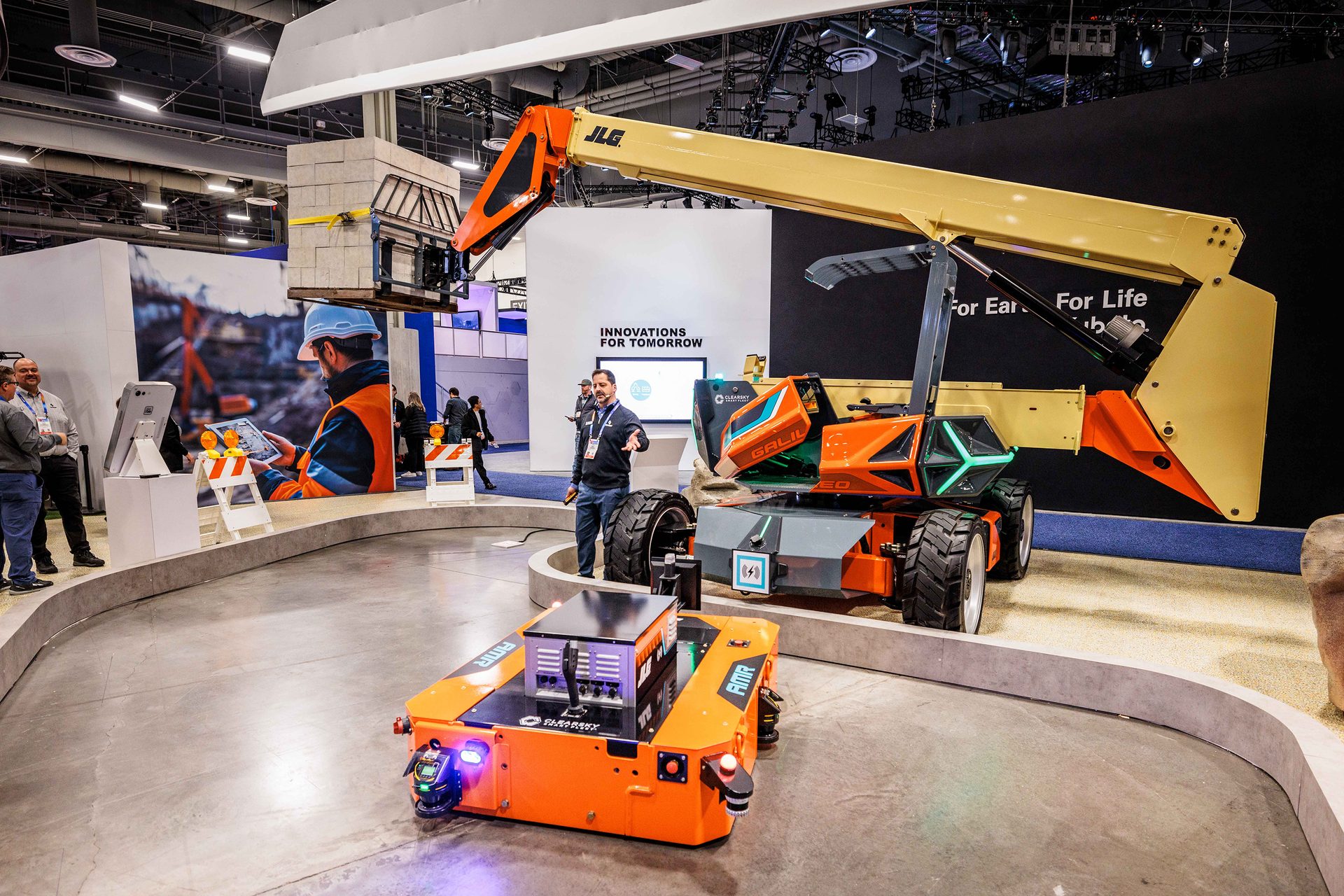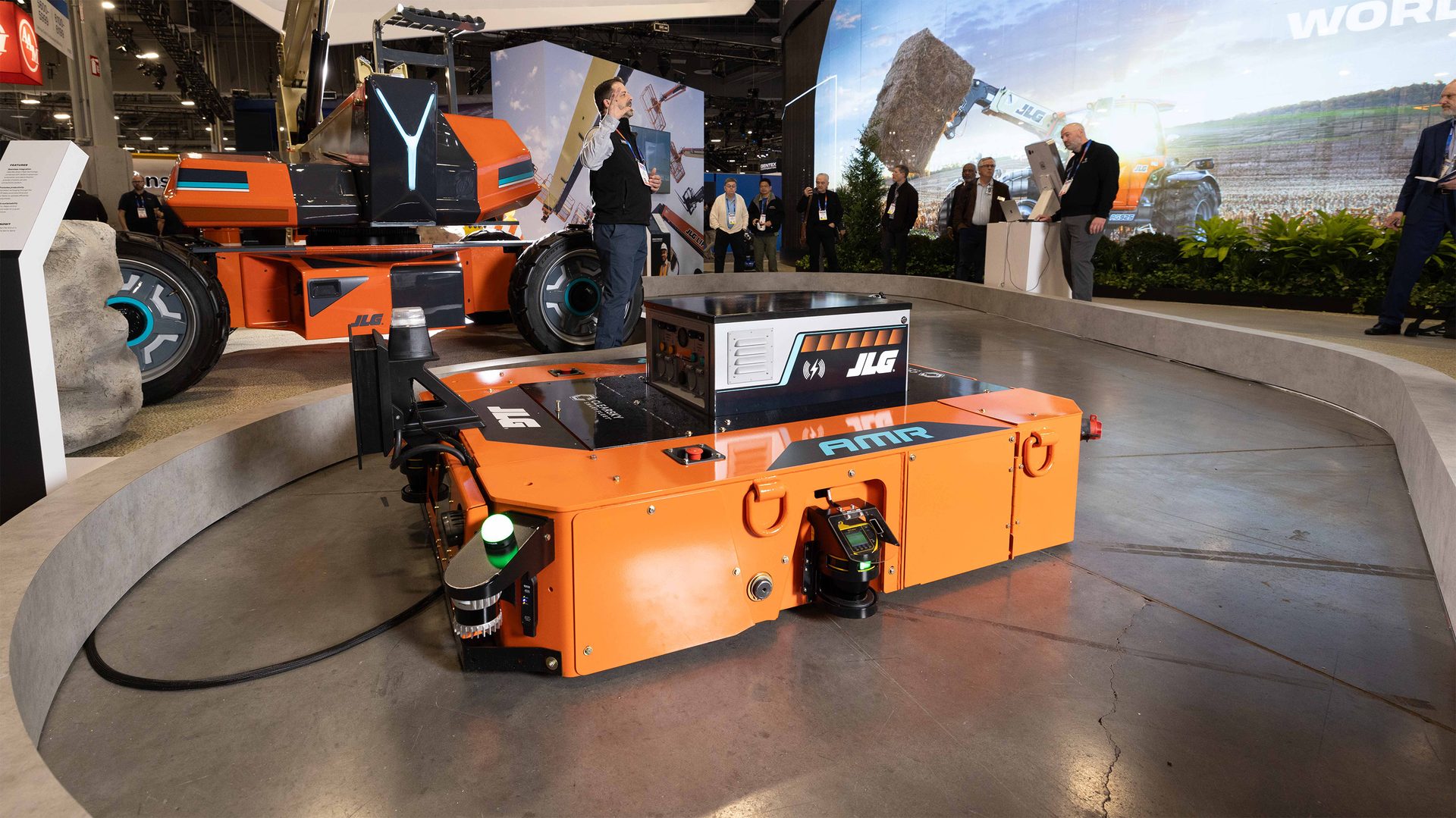How interconnected machines, real-time data and autonomous systems are transforming construction sites. By Nate Hoover
The Job Site of the Future: From Equipment-Centric to Ecosystem Orchestration
xxxxx. xxx
xxxxx
xxxxxxxxx
xxxxxxxxxxxxxxx By xxxxxxxx
h2 - xxxx
h3 - xxxx
H1 headline
For decades, worksites have operated on a simple premise: workers use machines to complete tasks. A MEWP (mobile elevating work platform) positions workers at height, and a telehandler lifts and moves materials across construction sites.
But what if these machines could do more than perform individual tasks? What if they could communicate, coordinate, and optimize their performance?
For more than five decades, the focus has been on safely elevating workers using machines designed specifically for lifting people—even just a few feet off the ground.
This process involves several steps that, while crucial for safety, add complexity. Operators must choose and verify the right MEWP, navigate to the work area, and carefully position the platform before beginning their tasks. Then, they must safely descend and complete the operation.
While necessary, these steps often take skilled workers away from their core expertise. An electrician, for instance, may spend more time managing equipment than wiring systems. Balancing safety and efficiency has long been a challenge.

xxxxxxxxxxxx
The New Ecosystem Paradigm
Modern job sites are shifting toward smart, interconnected systems that enhance both safety and productivity. Advanced MEWPs now include real-time monitoring of equipment performance, environmental conditions, and safety metrics. These systems can automatically adjust to optimize operations.
Autonomous capabilities—such as self-guided positioning and centralized control—are making job sites more precise and efficient. Features like active obstacle avoidance and intelligent decision-making further support safety and performance.
Robotics and specialized end effectors are expanding automation’s role, reducing human exposure to risk while improving accuracy and consistency in repetitive tasks.
The industry’s future lies in ground-based operations that use remote control and automation to reduce the need for elevated human presence. Equipment is evolving from passive platforms into active tools assisting task execution.
This evolution supports a new vision: an ecosystem where machines and systems collaborate to complete work more safely, efficiently, and intelligently.

xxxxxxxxxxxx
Ecosystem Orchestration Through Equipment Symbiosis
The job site of the future is built on the seamless coordination of digital systems, automated workflows, and interconnected equipment. At the heart of this shift are ecosystem orchestration and equipment symbiosis, which together drive collaboration, efficiency, and sustainability.
Ecosystem Orchestration aligns all stakeholders—from contractors to suppliers—using digital platforms and real-time data to streamline workflows.
Equipment Symbiosis allows machines to interact, share resources, and adapt dynamically to changing site conditions.
By integrating these principles, construction sites become smarter and more efficient:
- Seamless Communication: Real-time data exchange enhances coordination and reduces downtime.
- Optimized Resource Management: Analytics ensure efficient use of materials, energy, and equipment.
- Risk Management: Automation and monitoring minimize human error.
- Efficient Project Completion: Better coordination between humans and machines speeds up timelines.
- Sustainability & Waste Reduction: Smarter systems reduce waste and environmental impact.
The Future: Interconnected Job Sites
Construction’s future is rooted in the integration of orchestration and symbiosis. As these technologies mature, they offer practical solutions to today’s challenges—boosting productivity, safety, and sustainability.
The job site of the future is not a distant concept—it’s becoming a reality. Ecosystem orchestration and equipment symbiosis are redefining how we work at height and beyond, creating more intelligent, adaptive, and efficient job sites for the infrastructure of tomorrow.
Images courtesy of JLG Industries.
Nate Hoover is the senior director of Product Management at JLG, an Oshkosh Corporation business. He holds a B.S., Mechanical Engineering from Penn State University and an MBA from the University of Delaware.
